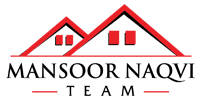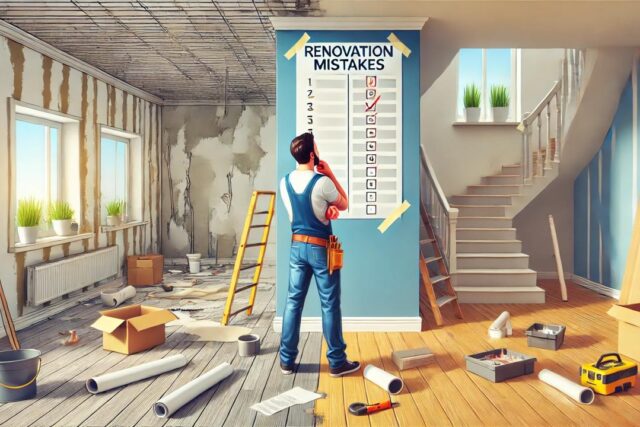
Making home improvements can enhance comfort, boost property value, and increase energy efficiency. However, funding these projects can sometimes be a challenge. Fortunately, several financing options are available to help homeowners tackle renovations without straining their budget. Whether you’re upgrading your kitchen, remodeling your bathroom, or adding an extension, choosing the right financing method is crucial.
In this guide, we explore the best financing options for home renovations, compare home equity loans vs. personal loans for remodeling, and discuss how to finance a major home renovation without refinancing. Let’s dive into the details and find the best solution for your renovation needs.
Understanding Your Home Improvement Costs
Before deciding on a financing option, it’s essential to assess the scope of your home improvements and estimate the total cost. Here are some key considerations:
- Project Scope: Are you planning minor updates or a full-scale renovation?
- Material Costs: High-end materials can significantly impact your budget.
- Labor Expenses: Contractor fees vary based on expertise and region.
- Unexpected Costs: Always set aside extra funds for unforeseen expenses.
Once you have a clear budget in mind, you can explore financing options that best suit your financial situation.
Best Financing Options for Home Renovations
Financing a home renovation requires careful planning and selecting the right financial product. Here are some of the best financing options for home renovations:
1. Home Equity Loans
A home equity loan allows homeowners to borrow against the equity built in their property. This loan provides a lump sum at a fixed interest rate, making it ideal for large projects.
Pros:
- Lower interest rates compared to personal loans.
- Fixed monthly payments ensure predictability.
- Suitable for major renovations.
Cons:
- Your home serves as collateral, meaning potential foreclosure risk if payments are missed.
- Requires sufficient equity in your home.
2. Home Equity Line of Credit (HELOC)
A HELOC functions like a credit card, where you can withdraw funds as needed up to a set limit. It offers flexibility for ongoing projects.
Pros:
- Borrow only what you need, reducing interest costs.
- Lower interest rates than personal loans.
- Great for phased renovations.
Cons:
- Variable interest rates can fluctuate.
- Requires discipline to avoid overspending.
3. Personal Loans
For homeowners without significant equity, personal loans provide a solid alternative. These unsecured loans do not require collateral, making them accessible.
Pros:
- Quick approval process.
- No risk of losing your home.
- Suitable for mid-sized renovations.
Cons:
- Higher interest rates compared to secured loans.
- Shorter repayment terms may result in higher monthly payments.
4. Credit Cards
While credit cards are not typically ideal for financing large-scale home improvements, they can be useful for small projects or emergency repairs.
Pros:
- Instant access to funds.
- Some cards offer 0% introductory APR for a limited period.
- Good for minor upgrades and purchases.
Cons:
- High-interest rates if not paid off quickly.
- Limited borrowing capacity for large projects.
5. Government Grants & Incentives
Certain home improvements, especially energy-efficient upgrades, may qualify for government rebates or grants.
Pros:
- Reduces out-of-pocket expenses.
- Encourages eco-friendly home upgrades.
- Some programs offer low-interest financing.
Cons:
- Eligibility requirements can be strict.
- Limited availability depending on location.
Home Equity Loans vs. Personal Loans for Remodeling
When comparing home equity loans vs. personal loans for remodeling, it’s essential to consider interest rates, repayment terms, and risk factors.
| Feature | Home Equity Loan | Personal Loan |
|---|---|---|
| Interest Rate | Lower | Higher |
| Collateral Required | Yes (Home) | No |
| Loan Amount | Higher | Lower |
| Repayment Term | Longer | Shorter |
| Approval Process | Slower | Faster |
If you have built substantial equity in your home and need a large loan, a home equity loan is a cost-effective choice. However, if you prefer a faster, collateral-free option, a personal loan may be the better fit.
How to Finance a Major Home Renovation Without Refinancing
Refinancing your mortgage isn’t the only way to finance a large-scale renovation. Here’s how you can finance a major home renovation without refinancing:
1. Utilize a HELOC
Instead of refinancing, consider a home equity line of credit (HELOC) to access funds as needed, minimizing interest payments.
2. Apply for a Personal Loan
For homeowners without home equity, personal loans provide a viable alternative to refinancing.
3. Explore Government Programs
Some government initiatives offer low-interest financing or grants for energy-efficient renovations.
4. Use a Home Improvement Loan
Many lenders offer specific home improvement loans designed for renovation purposes, often with competitive rates.
5. Consider a 0% APR Credit Card
If your renovation costs are manageable, a 0% introductory APR credit card can provide interest-free financing if paid off within the promotional period.
Conclusion
Home improvements can add significant value to your property, but financing them wisely is key to avoiding financial strain. Whether you opt for a home equity loan, a HELOC, or a personal loan, it’s essential to evaluate your financial situation and choose the best option for your needs.
By understanding home equity loans vs. personal loans for remodeling and learning how to finance a major home renovation without refinancing, you can confidently upgrade your home while keeping your finances intact.






Leave a Reply
You must be logged in to post a comment.